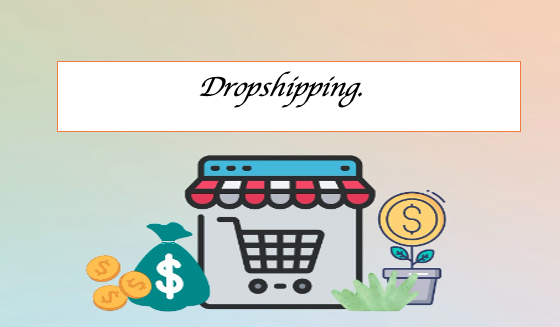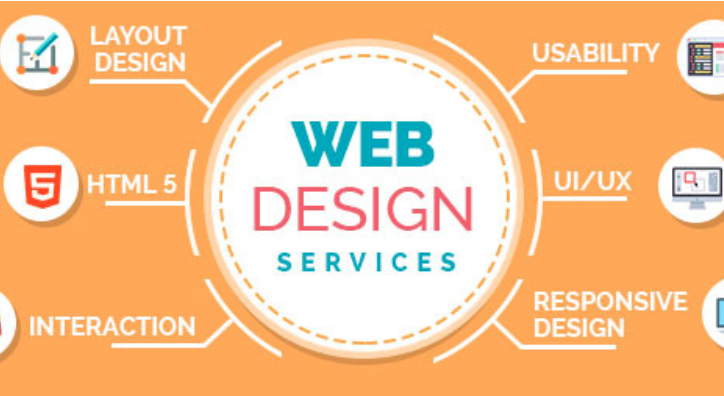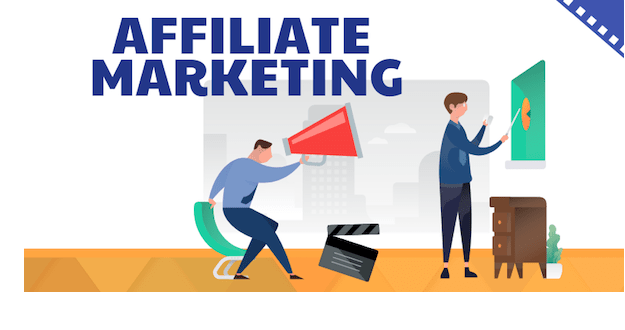Best Business Ideas for you.
Business ideas are diverse and you need to be investing in being your own boss. What you need is motivation to start your own business.
This makes you the controller of everything surrounding where your income comes from. It is a great step in life. Here are some of the business ideas that you can incorporate to kickstart your life:
1. Dropshipping.

What is Dropshipping?
This is a business system that allows a firm to trade products with no maintenance of product inventories.
When a client places an order, the company notifies the product’s manufacturer that an order has been prepared and needs to be dropped into shipping.
In place of a drop shipping company, the distributor or the manufacturer sends the product to the customer directly.
For one to get an order as a consumer, you pay the drop shipper, the drop shipper pays directly to the distributor or manufacturer and finally, the distributor or manufacturer facilitates sending the product to the consumer.
Dropshipping is a low-cost means for new businesses to generate sales without a lot of operating costs because no inventory is considered necessary. It also avoids being stuck with inventory that cannot or will not sell.
Six steps to starting a dropshipping business:
Step 1: Decide on a Business Concept
This concept explains what you sell and to which clientele. Dropshipping has many options; you should begin with a small selection of products that you believe will appeal to a particular audience.
The concept serves as the base for the products you are selling, the design of your website, and your advertising, so investing time in it is essential.
However, since the costs of launching a dropshipping line of products are limited, you can make adjustments if you feel you made an error or your product enthusiasm changes.
Step 2: Perform competition research
Remember that your company will be going to have to compete with other dropshipping companies as well as retail mega-corporations like Walmart and Amazon.
Numerous potential drop shippers make the mistake of looking for a product with little to no competitive pressure.
That indicates that there is no need for that specific product. There are lots of reasons why a product may not have much competitive market, which include high shipping charges, distributor and industrial production issues, or low margins of profit.
When undertaking market research, seek out products that have competitive pressure, as this indicates that there is a need and that the business plan is sustainable.
Step 3: Secure a supplier
It is time to select your supplier that will be your ideal company for the shipment of your customers’ products once you get the products you want to deal with.
Here are some things to check on while choosing a supplier:
- Quality: You choose a manufacturer who offers good quality for the representation of your company. One business strategy is to charge a higher price for higher-quality products.
- Profitability: The product you are selling should allow you to generate a reasonable profit. In your calculations, include shipping and transaction costs. Many drop shippers aim for profit margins of 15% to 20% and if you’re able to increase your profit margin, that’s an advantage to you.
- Reliability: You really would like to work with a distributor who sends products on time and with reasonable shipping costs and times. Many suppliers are based overseas, and you’ll need to choose whether or not you want your clients to wait for products. You also need a supplier who maintains a product in stock because it is inconvenient for both you and your client to place an order that cannot be filled. You should order a few products from the distributor to be sure of reliability and note the process.
- Return policy: Find a supplier who provides a return policy whenever possible. Many don’t so double-check before finalising any decisions. You must consider how you will affirm your return policies regarding what the supplier provides.
Step 4: Build an Online Store
At this stage, you need to create an e-commerce platform for selling your goods. This is a store created to assist in displaying the products on sale in a presentable way while working on shopping carts needed for running transaction purchases.
To create the website you need:
- A Content Management System, such as Shopify or WordPress
- A domain name
- Web hosting
- Integrations with the chosen drop shippers
- An in-built payment system for online payments.
Most established e-commerce websites usually automate product sales with the order to the distributor, if not automated orders will be entered manually and this can be tiresome and errors may occur.
Shopify is among the best choices for the creation of a dropshipping business.
Furthermore, their other e-commerce platforms to it will depend on your preference.
Finally, you should also sell your products through other platforms such as Etsy, Social media (Facebook or Instagram), or Amazon and it helps your business in exposure leading to more sales
Step 5: Register your business
The dropshipping business may seem to be unique but it’s generally a business like any other on the lookout by law. Therefore, is recommended of you as the business owner register your company to avoid tax-related and other legal issues.
The registration process entails application for an Employer Identification Number (EIN), opening up a business bank account, sales tax ID, and any other permits you may need to run your business successfully.
Documents and procedures vary from one country to another and you are supposed to communicate with your specific local authorities to be on the clear side.
Step 6: Offer Customer Support and Service
Always maintain a high level of service to your clients at all times. This entails responding to questions, shipping out the right products as bought, and making everyone happy with the order.
Do not worry when your online store doesn’t hit any sales because all you need is to work harder and smart in promoting your company for it to be exposed widely.
Conclusion
Anyone can start a dropshipping store by using marketplace suppliers and functionalized websites but it is not as easy as it sounds, however with personal effort, determination, and a winning product, you can succeed.
Finally, there is no assurance that your dropshipping eCommerce online store will make you easy money, but this article has shown you how to do it!
2.Sell web design services.

Web design refers to the art of arranging and planning content on a website so that it can be shared and accessible online across the world.
Web design business is growing at a high rate making it an ideal opportunity and now is the right time for investing in the creation of a successful brand.
Before a start, you need to check out the current overall web design situation and be sure of your readiness to start the business.
Step-to-step guide to starting a web design business:
- Picking a Web Design Niche
This might seem an impossible task if you lack a ton of experience in a specific industry or website building for clients.
For beginners, you get to sell yourself to potential clients by choosing a niche as a web developer or web designer.
Having selected a niche assists you in getting leads fit for your business. The niche should be something you have passion for and have the ability to be successful in it.
You may choose to concentrate on a certain region when building your niche. This doesn’t necessarily include starting a business and renting office space within the city, but it does signify that you’ll concentrate on helping the town’s business community wherever you’re stationed.
When done with niche selection, research to be sure:
- The target niche has opportunities.
- The websites you build are affordable to your target clients.
2.Decide on Design Services to Offer.
It is time to decide on the services to offer once you have determined your business goals and picked out your target audience.
At this time you may choose to stick to web design services only or offer some additional services like website consulting or maintenance. It is always advisable to diversify in that niche to add value to your clients.
By offering a broad range of service options, one may attract both customers and investors to your business. The following services are recommended if one wants to offer various website services:
- Managed hosting
- Search Engine Optimization
- Web development
- Branding
- Web design
These services will be of relief to business owners set not to worry about technical strategies of website management. Finally, only offer services you are aware of 100% customer satisfaction.
3.Set your Pricing Right.
This is not an easy task mostly when you are new in the industry but it is very crucial because your business makes money through it.
To guarantee that you’re pricing appropriately, you must take into account all of your expenses.
This is what you need to do to make sure you offer competitive pricing rates:
- Research the services your competitors offer and their pricing.
- Do a monthly business expense. This includes; web hosting, branding, rent, tax payments, and insurance.
- Decide on the profits you intend to generate. You should ensure that your web design firm is sustainable by evaluating your costs and setting a markup for your services.
- Examine various pricing methods. How much you should price an hourly rate or a per-project rate will depend on what your competitors are charging and also how clients view your services.
- Keep a close watch on your overhead expenses. Your services can be more affordably priced while still turning a profit if your overhead costs are reduced. When your firm grows, you might also consider raising your prices.
- Provide a range of services as you continue to experiment with different price models. You will be able to sell much more of your services at a greater price.
4.Pick a Name for your Business
You should come up with a catchy name making it capture the attention of your audience. The brand name you pick is vital in establishing a brand entity where it acts as an asset for your website design business.
The name should fulfill the following criteria:
- Easy: The name should be easy to say, spell, and Google though you can choose whatever name you like as long as people can pronounce and spell it.
- Meaningful: Your name should be relevant to your business and should assist your audience to associate with the brand.
- Memorable: You should get a unique name that stands out from your competitors and is easy to click in the mind.
- Protectable: Get a name you can trademark and check if it can be the same domain name for the chosen business name.
- Future-proof: The website agency name you pick now should be relevant currently and in the future.
- Visual: The name should be easy to communicate through colors, icons, design, and logos.
5.Set Up your Workplace.
Your workplace will depend on your budget and you will choose between working from a rented office or a home office.
While starting the business without enough capital, a home office may be the best though as your business elevates it’s important to have an intended workspace.
You should invest in quality software and hardware. You need reliable tools like a printer, a computer, and a scanner. A high-quality camera is also worthwhile for taking photos for business websites.
Below are tips you should follow:
- Do an estimation of the workspace you as the rental payments go in hand with the size.
- Renting an office in a secure location can be beneficial for small businesses.
- Be realistic in having a clear budget in finding a good office within your budget.
- Check out the terms of the office to rent to get a knowhow of the responsibilities of office upkeep.
6.Fulfill Your Legal and Administrative Needs.
At this point, you are supposed to get all legal local government requirements. You should also take a look at the necessities as you set up your business.
Purchasing liability insurance will be ordered but it will depend on the types of clients and service costs you work with.
7.Creating your Digital Branding.
This entails the building of your visual identity for your business. All you will need to create are:
- Business logo
- Font pairings
- Color Guide
- Image style
- Voice/ Personality
Website or content updating can be easily outsourced to others especially if your focus is to create a successful business and brand.
8.Building a Business Website.
A business website shows its legitimacy where clients get to build some level of trust. Coming up with a well-structured website opens up opportunities to win potential clients by the showcase of your design skills and expertise.
Below are detailed tips to build an amazing website.
- Focus on Visual Appeal – Your official site operates as a digital portfolio and must handle the majority of the load whenever it comes to showcasing your capabilities as a web designer. Develop a website that would be appealing to your clients.
- Paying Attention to the Content – Be sure to use high-quality content and good-quality images if you are to use one on your website with no errors that add value.
- Showcase Testimonials – Customers do check for online reviews while researching companies. Therefore, is advisable you kindly ask your clients for testimonials and display them on a clear note on the website. This will dispute any doubts from new clients about getting access to your services.
- Optimize Search Engine Optimization (SEO)– Being a business owner now, you have full responsibility of looking for clients where optimizing your websites for SEO assists in gaining a higher rank on Google Search Engine Results Pages(SERP) and this makes your website more discoverable.
- Automating a Prospective Process – By implementing SEO best practices, your site will appear more frequently in organic searches, maximizing your lead generation. Therefore, it will be necessary to automate the prospecting process. On your website, you can incorporate a lead-capturing form. A lead magnet can be utilized to generate traffic by offering a valuable offer.
9.Promoting your Business
At this point, having had a great name, a wonderful website, and branding made the right way, letting people know more about what you do will be vital.
These are ways to promote your business:
- Creation of profiles on Google My Business and other directories to attract local clients to your business.
- A separate business page is recommended for the promotion of your brand on platforms like Facebook, Twitter, and LinkedIn.
- For highlighting your expertise and give extra mileage to your brand you should use email marketing and video marketing for your business to win.
- Good customer service acts as satisfactory to your customers. Therefore, you should invest in customer relationship management software for the automation of processes like standard communication, data entry, and many more for a great customer care experience.
- Search Engine Optimization also acts as a fantastic way to a website and customer promotion.
10.Growing the Business.
A successful business needs a combination of tenacity and strategic thinking.
The following are some classification methods for starting a long-term sustainable web design business:
- You should test your limits by handling as much work as possible and using it as a growth catalyst.
- Offering top-notch customer services leads to more referrals to your services.
- You should establish yourself as an industry guru by using webinars, blogs, and social media groups. If your blog content or webinar delivers value, you will attract new clients.
- Designing packages, being customer-focused and offering services that are tailored to their particular needs can boost business growth.
- Focus on becoming a specialist rather than someone who generalizes as this helps in establishing a loyal customer base.
- Hiring qualified people where getting them reduces the chances of hiring and firing contributing to overall business growth.
- Always figure out a marketing strategy that works for you because every business is unique.
- Finally, work on your productivity, time management, and efficiency for your business growth.
3.Start a digital agency business.

A digital marketing agency is a business that entails exclusive promotion to customers using online platforms, which are television, email, websites and blogs.
It assists companies in the expansion of their customer base, sales increase, and brand loyalty.
Here are some digital marketing niches, Search Engine Optimization (SEO), pay-per-click ads, video marketing, social media, email marketing, and website designs.
Digital Marketing Agencies
This business gives you all the freedom to work with any type of client you wish, get to offer any service of your choice, charge clients according to your rates, and work at your own pace. Agencies become popular according to profitability and demand.
Listed below are the most common digital marketing agencies:
- Full service: This service presents all or a good number of the client’s requirements where a team of creative, designers, analysts, and developers who will work on web development, social media management, SEOs, and campaign ads are included.
- Single – Channel: The channel specifically deals with one digital marketing area. Concentrating on one promotional strategy enables these agencies to provide unique results to their clientele while also dominating a marketing channel.
- Multi-channel: Multi-channel agencies exist in the middle ground among both full-service and single-channel agencies. These firms combine just a few complementary marketing channels. For instance, SEO and web design, or managing social media platforms and advertising.
Tools Needed to Run a Digital Marketing Agency
Listed below are tools essential to assist you to keep up with the competition:
- Semrush – This is an inclusive tool suite for enhancing online recognition and revealing marketing insights. Marketers get the listed services from Semrush: Keyword research, competitive research, Content marketing, Marketing insights, and SEO.
- Google Apps – Google searches can assist you to keep statistics of work on client campaigns, marketing growth, and keeping track of team members.
The following Google Apps are vital for every business:
- Google sheets
- Google Analytics
- Google Business
- Google Adwords
- Google suites
- Google Docs
- Zapier – It is an outstanding tool for creating automation across your tech stack’s suite of tools.
- Hunter.io – This one extensively helps you find contacts across the website and gets to control email outreach with a free plan chrome extension.
- Loom – This chrome extension tool enables one to do recording of your screen and audio with one click. The use of Loom reduces lengthy emails and calls with straight-point and informative videos.
Steps to starting a Digital Marketing Agency.
1.Select Services to Offer.
You should determine what you want to offer to your destined clients. You have two options, a general service agency or a bid matching a few complementary services. Below are some of the ideas:
- Email marketing
- Video Marketing
- Influencer marketing
- Social media
- Search Engine Optimization (SEO)
- Content marketing
- Website design
- Pay-per-click ads
A web design firm able to offer SEO services to clients for whom they build websites is indeed an example of matching complementary services together.
2.Pick a Niche.
There are plenty of agencies in this agency business making competition intense. Choose to be unique instead of being a generalist who serves everyone.
This is achieved by choosing a niche and focusing specifically just on businesses within the same specialty. The lesser your target group, the more directly you’ll speak to them.
Your clients will gain a better understanding of what you do and will feel more at ease making quick decisions. You can become a market leader by creating processes built around the consistent work you do.
3.Market Yourself and Get Clients.
Being a marketer yourself, you must make sure to be on top-notch of your service when you are representing your business to prospective clients.
Ways to market your agency and gain customers:
1.Create a website.
Clients will do a research on your agency online after they get to hear about you from outbound marketing. Your website will be the only focal place to direct your potential clients.
A website helps you do a lot of business, including:
- Showcase your portfolio to clients
- Build credibility as your outbound marketing
- Use ads and content marketing to send direct inbound leads to specific landing pages
- Communicate directly to your target market, building trust and desire
- Demonstrate your marketing skills.
2.Cold Email or Cold Call.
This method works well when you have a plan and play a game of numbers. You have to stand out because every existing marketing technique that exists, is also being utilized to the fullest by other agencies.
This is accomplished by proper research of the owner and the company. Customization draws attention and illustrates your commitment to extra effort.
3.Create a Portfolio.
It is very crucial to showcase your portfolio through social platforms, that is if you don’t have a website by showcasing to the target clients that you deliver results and are always consistent on them.
A good portfolio should include precise and reliable timelines, specific metrics, and notification on why the outcome was favorable.
4.Content Marketing.
This is a marketing strategy that involves relevant content creation such as articles, videos, and any other media to draw in and engage an audience.
Should you have long-term arrangements for your agency, this is an excellent method for building a metaphorical moat around it.
Consider a medium and produce consistently high-quality content that is a step above what is already available.
5.Build Social Media Accounts.
There is no need to be everywhere; you should only create your stand as this will place you as a lead. Only focus on places where you are likely to get your target market.
6.Nail Down Service Delivery.
In this business, getting clients after establishment is the first crucial growth then excellent service delivery second.
As a marketing agency owner, you don’t have to worry about service delivery all you need is to get your time together for training others to perform client tasks, building your systems, and hunting new clients.
This will be the only way you will have moments to get clients while consistently delivering high-quality results.
For an agency to progress efficiently, systems for managing client delivery are necessary for the tasks you do repeatedly where the strategy is to be completed by a computer or affordable labor.
4.Launch a SaaS Business.

SaaS business is software as a service where the users get access to the software through browsers or web-based applications.
Clients can access the software worldwide as long as there are internet connections.
It is accessible with subscription plans where one can pay monthly or annually to use the software, though other providers offer free trials giving the customer to decide whether to subscribe after that free trial expiration.
Advantages of starting a SaaS Business.
SaaS is such a good idea to select for your business. Below are the 5 most viable reasons:
- Accessible to many users: The SaaS services are available remotely and the only important thing to run it is the internet. This aspect greatly enhances the size of your intended audience.
- A secure space: A secure space: The developers are very keen on this aspect of storing data safely in the servers when creating a cloud-based application.
- Reliable cloud network: By choosing the most reliable location for your SaaS business, you can do a server placement anywhere worldwide where the server will still run even after one goes down.
- Easy to scale: SaaS products are configurable, which means you can do an upgrade as required without business interruption.
- Saves your money: This saves you from the hustle of an office setup because everything happens online. All you need is to learn all about starting a SaaS business only.
Steps to Start a SaaS business
- Define the value of your services
Every customer will come after your services expecting you to assist them to solve their problems. As you communicate with your clients, make sure it’s a good fit between how you know your product and how the user will benefit.
Do research on problems you can settle as it makes it easier to sell what clients need. Always be confident enough to talk with potential clients and vendors in your field to get a knowhow of challenges faced.
2.Research the Market and your Competitors
When an idea of a SaaS business clicks your mind, you should do a thorough search on your industry, competition, and general information about the business.
Before investing more money or time in your SaaS Company, always ensure there is room in your field for another service or product.
As the investor, you should understand broadly your target audience and be open-minded about challenges you may encounter along the way. For a research startup, visit sites such as TechCrunch and Crunchbase data on companies in your field.
3.Explore your Pricing Strategy
Once you have outlined your value and determined what other companies are doing for the same value provision, get to set your pricing.
There are numerous ways to acquire clients the door to explore the possibilities, varying from free trial plans to freemium service advancement options.
The pricing plan must go in hand with your mission and target clients.
With a need to have lots of customers and most of them cannot afford your service, pricing yourself high makes no logic because it will lead to fewer clients as there may be a smaller segment of high-value users who be willing to pay more to get top-of-the-line products.
Moreover, if you need to offer exclusive value to a small number of users, raising the price becomes valid.
4.Define a Minimal Viable Product( MVP)
This is a SaaS application version with a basic feature set that early testers can check and suggest whether or not they need the final product.
This helps the investor in testing the market and seeing what an awesome business idea will get.
When creating an MVP, always consider the user persona, your significance, and your business limitations.
It ought to offer a solution to the user’s challenge and be realistic to deliver quickly. After, you need to get ahead of your actual clients and comprehend their needs exclusively to up the game of your services for quality satisfaction.
Finally, be keen to gather clients’ feedback as you eliminate extras that may be a limitation to your product from being viable to these clients.
5.Design your SaaS product
After the completion of the initial step, you can begin picturing your prospective SaaS product.
At this point, it’s worthwhile to create a prototype that illustrates your vision according to how clients will engage with your product.
Once you have established one, request feedback from potential clients to get real and constructive input on its abilities and shortcomings.
This step is remarkably helpful in discovering possible errors in your project and seeing how your product will appear.
Designing a prototype allows you to perfect your vision and distinguish any practical or market issues just before the development phase starts.
6.Collect Project Requirements.
This involves a clearly defined customization strategy, a list of alternatives to implement, statistics to measure success, and a plan for handling safety concerns.
To keep your clients well, your software should be flexible to their changes. Also, include some promising and precise wants in the list of advanced features you will develop after creating a Minimal Viable Product.
In this manner, your business strategy will be useful and scalable.
The crucial process of gathering project requirements includes:
- Define your business’s goals and expectations for engaging your target audience, addressing the problem, and offering the solution.
- Implement an agile strategy for analysis, which entails dividing up the process into sprints, establishing short-term goals for each sprint, and building future sprint planning on the insights obtained from previous events.
- Prioritize the activities to optimize order and predictability.
- To improve productivity and transparency, capture and approve the outcomes.
- Update the results based on the information you acquire during feedback sessions and communication.
7.Find developers and gather a team.
Look out for developers who have worked before on SaaS applications and maintain them as your work team.
One approach to achieve that is to make direct contact on LinkedIn, express your idea with them, and ask if they would be willing to find out more.
For a high-quality solution, a referral to an IT firm with experience in the SaaS development domain.
8.Define the Tech Stack.
This being the last stage in the article to creating a SaaS business it might be a bit challenging in selecting precise technology for your project without specifications, a list of fundamental features, and the design, along with developers you can discuss this problem.
You should make the right decision right away for your app to get the greatest shot of scaling.
The following are the most frequent tech stacks used by SaaS companies:
- Application Programming Interface (API): Third-party integrations like Google, Mailchimp, Auth0, and Twilio.
- Backend programming languages: NodeJs and Ruby on Rails (RoR).
- Frontend programming languages: VueJS, Javascript, HTML/HTML, CSS/CSS3, Angular, ReactJS.
- Database software: MariaDB, PostgreSQL, MongoDB, Amazon Web Services.
- Cloud provides Google cloud platform, Azure, and Amazon Web Services.
- Native app development: React Native, iOS, Android using native development.
9.Get started with SaaS business
If you achieve a lesson from this guide about SaaS startup, it should be that of getting your product out in the marketplace.
The more you will have a successful strategy, statistics to track achievement, and a readiness to refine, the more your business will endure and compete.
5.Start a tutoring business.

An online tutoring business is a one-on-one, real-time learning skill that takes place over the internet through video calls.
With this tutoring, a real tutor is a must not like e-learning. Tutors are responsible for reviewing their students’ class content, test prep, and homework.
Some tutors emphasize teaching their students authentic learning as others teach them how to create sensible notes or consider taking more comprehensive examinations.
Online tutoring enables learners to work at their own pace and stay focused on the areas where they need the most assistance, which makes it perfect for a student with a broad range of styles and preferences.
Online tutoring creates an educational system that is equally efficient and cost-effective.
Requirements for Starting a Tutoring Business
Getting to understand the key requirements to start an online tutoring business makes it easy to flow along with the necessary steps
- Education: A high school diploma is the least a tutor should have for a start though a high advancement is needed if you want to work at an educational institution.
- Certifications: It’s not a must for instructors to have certifications. All the same, they raise the possibility of getting higher-paying jobs. The certification you can get depends on the country you are living as institutions differ in providing certifications. Besides the certification, the training sharpens the schooling services.
- Teaching Experience: For sustainability, as you tutor, you have to be an expert in your coaching skills. You continue to gain more experience and there is where your service charge increases. Your ability to approach and assist a particular student will come with experience. Your ability to use the concepts you acquired during your training will grow with experience.
Steps of Starting a Tutoring Business Online
- Selecting your niche
It is very important to decide on which niche to work on as it makes you stand out in this competitive industry.
The correct website design for your intended audience, more relevant leads, and even a shortlist of online directories to incorporate your business in will all be easier to do once you have decided on the niche you would like to target.
85% of clients search online for and identify local companies while small firms use websites in 71% of cases. It also enables you to get the most out of earnings for your business in the early stages as you stay away from direct competition with established brands.
Here are some examples of niches in the tutoring industry:
- Physics
- Chemistry
- Calculus
- Basic and Elementary math
- English as a second language
You need to select a niche with the highest chances of success but it depends on two factors:
- Your area of interest
- The profit potential or the supply/demand ratio for a niche
With an overall fulfillment of your area of interest and expertise you need to find sections with high demand, here are a few tricks to do:
- Understand the aggressive landscape in your area: Do thorough research on tutor services offered by other companies, and get to note of the popular ones and the ones offered by quite several businesses.
- Analyze the ticket price or cost for different services: You may need to start by focusing heavily on quality than quantity. It is good to locate a consumer group with a possibility for considerably greater pay.
- Look for the demographics that have potential: Use web directories, school enrollment data, and polls conducted in various communities to get a sense of the market needs and tutoring firms fulfilling the demand.
2.Picking out a tutoring business model
There are several models one can pick:
- Buying a tutoring franchise: Doing your research is essential because purchasing a franchise can have drawbacks, such as initial costs and a lack of control.
- Running a home-based tutoring business: This fits well if you looking forward to cutting down on startup budgeting. You may decide to conduct an online function or have one-on-one personal meetings with customers as part of a home-based tutoring business.
- Be a traveling tutor: You may decide on travelling to customers’ homes for teaching sessions. This can be of help to the parents to get more attracted since they won’t dodge their duties driving their children to lessons.
3.Registering the business.
The registration process is determined by the country you are in; it is always advisable to contact the relevant authorities. You’re nearly finished with the company registration procedure once you’ve selected the best commercial enterprise for your training venture. Nevertheless, you must choose a company name first.
Getting a business name – You should select a catchy and unique name and one available in your country.
4.Separate your business finances from personal finances
Separating your funds from your business is always a smart move. Mixing both finances may threaten your legal protection. Even if you are operating a sole proprietorship, make the bookkeeping and taxation process smooth.
5.Open a business checking account: You can deposit cash or payment for invoices into this account. To ensure that all transactions are contained to a single bank account and a single set of statements, try to only spend money from your company account for business-related expenses.
6.Applying for a dedicated business credit card: A large number of people are unaware that your business credit score is independent of your credit score.
Having a positive business credit history helps you obtain dependable financial support from banks and other lenders, which can assist your business.
Enhancing your business’s financial stability and potential for future growth while increasing your ability to acquire dependable financing are all benefits of building your business credit history.
7.Create a business budget.
After completion of all the essential plans, it’s the point in time to calculate your startup and working costs.
It can be daunting to learn how to make a business budget, especially if you’ve never handled it before. It will, however, set you up for success and is essential for any small business.
Create a plan to assist you in effectively managing your funds to prevent costly mistakes and increase your profit.
Expenses to consider aren’t restricted to printer and ink, writing materials, advertising materials, bookkeeping software, and invoice. If you have thoughts on site rent and employing several tutors.
A business loan is necessary and if it’s your first time and not much credit is built the banks may not approve that.
Moreover, other substitute lenders may look at factors like the monetary health of the corporation score and individual score too for determinations about lending money.
8.Determining your pricing
Being new in this business pushes you to do aggressive rates to compensate your costs while engaging clients. Based on your hourly rates and workload, you can choose a fair pricing structure for your tutoring service in a few different ways:
9.Research the competition: You need thoroughly study if there are tutoring services near you, their niche, and how they charge their clients. This helps you decide on your service pricing and you can reflect on hiking the price if you offer more value than your competitors.
10.Consider the location: Consider which clients target you are scheduling to face by their level of financial stability where you weigh if they can be able to pay for first-class rates for your tutoring services.
11.Factor in your occurrence: An education license boosts your credentials despite being a must to have it. Having experience or appropriate college degrees becomes advantageous in increasing your price rate.
12.Market yourself
You’ll want to publicize the news concerning your new teaching services, so creating an efficient advertising strategy that fits your financial plan is essential. These are ways to get started.
13.Perfecting your elevator pitch: formulate a concise, compelling elevator speech to aid you to promote your services, especially when you’re doing this through word-of-mouth
- Offering a discounted rate starting: Acquiring your first client can be hectic mainly when you don’t have testimonials. This discount can assist you to gain clients even with a beginner experience and by this, you get to request testimonials. While seeking out new clients, these testimonies will increase your advertising potential.
- Building your online portfolio: Having a website, shows professionalism where you get to attract the right clients.
- Make business cards: Even if more companies have switched to digital promotion, business cards can still help your marketing and branding operations. Since lots of tutoring companies serve local clients, having business cards to hand out in your region might help promote your offerings.
- Set up a referral structure: Never underrate the influence of word-of-mouth promotion. It’s frequently the cornerstone technique for the advertising accomplishment of many tutoring businesses. A happy client who credits your tutoring service for their passing grade can greatly enhance your significance. To grow your business, start networking with existing customers.
13.Preparing for tutoring services.
Getting into the tutoring business is a vast way to earn as a side hustle or even pick to resign from your offline job. You should always be mindful and ready for several of the less appealing aspects of tutoring.
- Your timetable needs to be accommodative: Many of your customers will be schoolchildren who can’t be reached during the workday. College students’ availability may be more restricted if you are a tutor for them. As you attempt to incorporate each client’s availability into your calendar, it’s common for it to be uncertain. You must be willing to give up your weekends and evenings for your clientele.
- Tutoring tests your patience: Some clients will have greater difficulty than others in comprehending the topic matter. It takes time and patience to coach your learners and be aware of their varying learning rates. Learn as various training methods as you can to enhance the learning preferences of your students. You have a duty as a tutor to work with students to determine what is appropriate for them.
- Appease the parents: You will work with parents in addition to the students themselves as a tutor. It’s crucial to satisfy them while making your pupils’ learning surroundings contented because you’ll probably be selling your services to parents instead of learners. To retain pleased customers, you might need to develop some customer service capabilities.
- Zoning: If you intend to tutor students in your house, you must confirm that all zoning laws have been adhered to. Based on your locality, zoning regulations may change. To keep compliant, check with the county clerk’s workplace or speak with a trade lawyer.
Summary.
You must carefully consider what you will sell and what you will do when starting an online teaching business.
These processes may seem overwhelming at first, but once you master the basics, you can focus on expanding your tutoring business. It will be simple to handle going ahead. The preference for online learning among students today is a result of their growing technological comfort, and this trend will only continue to spread.
6.Start blogging.

If you are a good writer, blogging is one of the best business ideas .You can try writing content for your blog.
This only works if the content is interesting and helpful. Your blogs could be anything from fashion to cooking, to traveling, or anything in between. Most of your effort should go to creating content and writing articles.
You may want SEO tools to help optimize your blog and attract traffic. You have to be patient and wait until you get a decent stream of visitors then monetize the blog with affiliate links like Google Adsense.You should also read more on how to make money blogging.
How to monetise your blog.
Having a blog on set, all we want is words to be seen and shared. It’s not quite that easy, though, as is evident.
It is very significant to get access to the fundamentals of the online market as you give it a try to get earnings from the blog. Here are the laws of blogging you must follow for the growth and monetizing of your blog;
- Focus – Bloggers must always be focused. You should constantly write on a particular niche or topic. A blog attracts viewers from the met need, which makes them keep on revisiting. This can only be achieved by focusing entirely on the topic.
- Quality – Blogging is not all about publishing lots of content, but the quality itself which is thorough, well-written, and sources cited.
- Value – Your blog needs to teach other people according to what you are an expert at by delivering value. This can only be done by creating thorough tutorials and informative posts that interlink videos or other media to help you figure out your search.
- Engagement – Your ideas should be catchy for them to incite people to spend a lot of their time reading your articles, communicating on a forum, and watching videos you’ve added.
- Authority – The more you are popular in your field, the more you drive your traffic drastically. With the power, soaring high should always be in hand.
Monetizing your Blog
There are several ways of blog monetization, but we will focus on eight core methods that will help you get a stable income from your content efforts.
- Affiliate marketing – It works well while you are just starting and you don’t have your products or services to trade. All you have to do is write content that will work well with the affiliate deals you wish to promote.
- Advertisements – Pay-per-clickwill be a great way to earn an enormous amount of money but it needs good traffic which is 10,000 visitors in a day. Moreover, by the use of display ads as opposed to Pay-per-click ads, you may negotiate a price that would be more competitive.
- Email marketing – This is one of the most efficient ways to honestly promote your blog. By bond created with the readers, you can generate a good figure of income through the marketing of both the services and products along with affiliate offers through your given email.
- Selling eBooks – Developing an eBook that coincides with the content in your blog, offers a fast quick pathway to making money through your blog.
- Sell courses – Another way for income is by selling online courses. Come up with educative courses that will add value and by giving it all they can sell autopilot as another great avenue for passive income.
- Sell digital products – An excellent approach for generating money out of your blog is by digital goods produce. If this fits with your blog content, then you can effectively promote any kind of digital information product. Have the effort to build something that contributes to a need.
- Sale of coaching services – Coach Service selling can be very lucrative despite the sensitive aspects of the market currently. Having that in mind, you can decide to be a life coach, a business development coach, and finally a career coach.
- Securing sponsorships – One can create sponsored posts for as long as they are labeled sponsored in your blog. All you need is the traffic for you to sell it for a considerable amount of money.
7.Start freelancing.

If you are good at writing or coding, you can offer your skills where people are always in search of hiring. You just need to have an eye for detail.
Your clients will always tell you what exactly they want you to do. So this functions even if you don’t have any expertise in a specific area.
8.Get into the creator economy.

Many online platforms provide individuals best business ideas by dishing them with funds to start their businesses.
These include Facebook and YouTube.If you can create content and have something to say big tech platforms are awaiting you.
Just know that most platforms require a certain amount of tractions before you can monetize. The time it takes to hit the benchmarks varies from industry to industry and from platform to platform.
You need to first do some research on the type of video people in your niche are producing, you can go into the industry with some knowledge and a clever idea of what to make and why to make it.
9.Host a group platform.

Virtual groups are now on the rise. There are online book clubs, social clubs, and fitness challenges that are quickly becoming viable business models.
You just need to test your online course to know if you can make a group or a live workshop function. You need to know what customers want and need. You should find out how they implement the tools that you present to them.
10.Become an affiliate for your favorite brands.

Many products and software ethically rely on referral links as a way to build their customer base.
When exploring your marketing approach, think about how you can make your promotional efforts different.
You need to know that everyone is selling the same product and you should therefore brainstorm ways that will make you stand out from the crowd.
11.Launch a paid newsletter or subscription.

If you can create content that is exciting to others, all you need is an internet connection to launch your own niche company. Platforms like Patreon and Substack enable content creators to sell directly to their fans. All they take is a cut of the transactions.
12.Offer home delivery services.

There is an increased need in the community to have goods delivered to their doorsteps. So you can just be creative and start offering food delivery services.
You can take advantage of the pricing psychology; the pricing you charge is the value you create. Just make your delivery worth it and clients will appreciate it.
13.Get into the eCommerce business.

E-commerce is a wildly popular industry nowadays and tools like Shopify have made it easier to bring your visionary products to the market within weeks or months.
You just need to create a brand identity. You should educate yourself on manufacturing and shipping needs that your business will be responsible for.
It takes time to work out the kinks with any physical product but when you set in your marketing and shipping effort, revenue and profit will start rolling in.Learn how to create your e-commerce business.
14.Become a fashion designer.

If you have a thing for fashion and creative flair, you can start a business that creates fashion designs.
This involves sketching designs and creating original clothing, footwear, and other accessories. You can then embark on selling the designs online through artsy and crafty platforms like Etsy.
In case you want to create designs and apply them yourself to clothing, you will need to acquire a sewing machine, fabrics, and a measuring tape.
15.Create and sell your products.

You can start with a thought-out business plan and then create a variety of your products and stock. You can then take photos of your product and advertise the goods.
You can then create a website using website builders and join online marketplaces like Etsy or Amazon. You should not limit your marketing strategies to online platforms only. Use in-person techniques also to win potential clients and turn them into repeat customers.
16.Start a consulting business.

This is a great business to start with 5K or less if you are an expert in a particular field. You can sell your specialized knowledge in different areas such as healthcare, technology, accounting,Digital agency or taxation.
You can also get into social media management, marketing, law, and fitness. All you need is to build your website and then make clients know how good you are and how you can leverage your expertise for their benefit.
You can then print some business cards that you hand out in person and then work on building your social media presence. Once you have a strong network, you can be sure to earn from it all year round.
17.Create an online course.

E-learning was a $250 billion industry in 2020. It is projected to become a $3 trillion industry by 2027. If you have a computer, online courses have a low start-up cost but a high margin profit.
To make an online course fly, you need an audience of people who want to buy your online courses. Marketplaces like Skillshare can take you places.
The best way to be recognizable is to create content that is digestible,content-based, and personal. You need to hone into the specific concept of the subject of discussion or the skill that you are under discussion.Choose the best online platform providers.
18.Venture into digital marketing.
As a digital marketer, you need to help clients to create practical online marketing strategies that can increase their brand’s reach and attract customers.
This may involve creating a business around the product, generating product campaigns, doing social media ads, and helping with Search Engine Optimization.
As long as you can reach the target audience for your clients and help them boost their sales, it is a good business idea. You only need to learn the ins and outs of the business. However, free digital marketing material is there to help you.
19.Become a personal trainer.

If you are a fitness trainer or enthusiast, you can make money by being a professional trainer. This involves making customized workout plans for clients based on their strengths and weaknesses.
You then coach them as they go through these workouts. However, this venture requires some certifications.
You need to check out the National Association of Sports Medicine and the American Council on Exercise to find out how you can acquire the various certifications required in personal training.
20.White label a beauty or wellness product.

White labeling a product can be a great compromise if you are just getting started. White labeling is a great supplement for salon and spa owners, hairdressers, and beauty influencers who want to apply it to proven formulations.
There will be an increased visit to your location because the products you sell to your clients can’t be repurchased on an e-commerce site.
21.Provide cleaning services.

Opening maid or cleaning services can be a profitable business. It is a low-cost trade that requires little start-up capital.
A typical cleaning business entails full cleaning of residential and commercial places. You will always have to vacuum, sweep and mop floors.
You should also dust surfaces, counters, furniture, and other appliances. It includes washing dishes and clothing. You can also incorporate services like window blind cleaning, removing trash, and cleaning for people who are moving in and out of the building or office.
22.Start a security company.

Among other best business ideas starting a security company need the appropriate permits and licenses. They vary from state to state depending on the legal structure of your business.
But they can’t be more than $300.A fully-fledged security company may offer protection systems such as alarms, keycard entry tools, security cameras, and public surveillance gadgets. It can also offer security guards. You can include private investigation if you can offer the services.
23.Provide online business management.

To be an online business manager, you should be able to help in the following areas:managing the daily projects of the business, overseeing processes, providing direction to the team members, and generally helping busy CEOs and executives of the business in running the business effectively.
You can also be tasked with creating goals, measuring progress, and tracking the company’s Key Performance Indicators. All you need to get this business running is a laptop and internet. You also need to have key management skills. Some companies will ask you to prove your skills and certifications before hiring you.
24.Sell social management services.

Businesses have excellent opportunities to reach a rising audience. Agencies and freelancers experience the fear of the unknown while giving a try to market social media services to clients.
That is why it is important to express to people essential pieces of information which will clearly show what you do and how you can assist with their needs.
Clients will discover they need social media platforms as an element for their marketing plan if you clarify the advantages they will encounter at the conclusion.
Here are strategies to use when explaining to clients the marketing requirements of social media use:
- Show them how their competitors are flourishing on social media: Presenting several competitors’ accounts and their way of reaching customers is a sure bet to get a client for social media services sign-up.
- Show them that their audience lives on social media: With billions of people active on different social media worldwide, you can showcase these statistics and give your clients the right channels they should use based on their marketing demographics target.
- Show them how you can be of assistance: With the value of social media for clients’ businesses, they will want to know how you can be of help to them. You should craft a proposal based on client needs and also share some of your past experiences and client testimonials. Establishing your clients’ trust helps you convince them to use social media services.
- Show them the potential of viral social media content: Showcase some examples of viral social media campaigns for their clarification, and then illustrate how you intend to create relevant, viral content for them.
- Show them how lucrative social media is: With social media services selling, money is the most influential and solid agreement for agencies. In real life, social media marketing is one of the most affordable and lucrative methods of advertising.
- Show them how simple it is to measure social success: Measuring results is vital and the approach is non-native tools such as Twitter Analytics and Facebook Insights. They give you account-related information for your clients. Moreover, you can provide your clients samples from the internet if this material is inaccessible to them or if you aren’t authorized to access it due to various privacy matters.
25.Become a freelance photographer.

A freelance photographer is an independent artist who conducts skilled photo shoots for clients. The photographers own their photographic studios where they develop clientele and market their craft to attract new clients.
Step 1: Choosing a Photography Niche
A niche is a segment of a broader market with particular requirements, problems, and characteristics. Since each niche has unique qualities of its own, it will require a distinctive set of skills.
This implies that it is preferable to focus on one niche and dominate it. After you have mastered that one, you might be able to use those skills in a different industry.
From a commercial standpoint, it also works sense to concentrate on a single area because prospective customers frequently search for photography that addresses their unique requirements.
They will therefore have more faith in you if you are an expert in a single field. For illustration, if someone needs camerawork services, they are more likely to trust someone who specializes in wildlife. Following are examples of professional photography roles:
- Wedding
- Food
- Wildlife
- Fashion
- Real estate
Step 2: Setting up a Schedule
Making time in your calendar to set up convenient hours and appointments for customers is essential if you’re a photographer who works on your planning.
If your choose to major in family photography, families may find it easier to gather for pictures on the weekends, so having weekend hours available may increase your prospective clients and alternatives.
If you decide on photography as a side job, you can review the schedule of your primary role and your available free time. You might also take into consideration how long it takes to edit the images and send the final products to clients.
Step 3: Establishing a Budget
A budget can aid you to organize your financial resources to start and maintain the photography venture. You must be considering the costs of your equipment and the advertisements you use to market your services.
You can also think about the amount of money you aim to earn and how it can affect the rates of your services offered. For instance, suppose you only have time to conduct photo shoots on the weekend, and you hope to earn at least $1000 per weekend.
With your budget, you may determine to charge $200 per two-hour session to gain your desired income.
Step 4: Investing in Technical types of equipment
Having your practical equipment as a self-employed photographer helps you capture high-quality images for your clients. Typical tools for photographers may include:
- Camera
- Lenses
- Lighting tools
- Tripod
- Professional printer
Step 5: Creating your Portfolio
The work in your professional portfolio will land you a job, so put your best foot forward. Showcase any unique techniques you’ve learned or particular works of art you are particularly proud of at the top of your portfolio so that it is easily seen.
There’s no need to include 100 photos because employers are busy: 8 to 12 is the golden quantity.
In this method, the customer/employer can instantly determine your style. Choose your best from various subjects you capture, blending your street photography with your landscape photos.
Step 6: Creating a Website
Clients can visit your proficient website to acquire more about your business and schedule a photography session. You can build a website reflecting a professional brand that encourages prospective clients to work with you. You can provide information like:
Rate of service: you can specify hourly rate charges and the price of photography packages, which may include printed photos or downloaded images with watermarks.
Think about you: Consider writing an “About Me” page on your webpage that describes the values and brand you offer as a freelance photographer.
Portfolio: As you grind more with clients, you can add pictures to your webpage portfolio to keep it updated.
26.Sell stock photography

Stock photos are Images made manageable for purchase, usage in promotion, or other profitable endeavors.
Websites photos have enormous databases of pictures that clients may search when they need a blog to post pictures, communal media posts, magazine articles, pamphlets, or book covers, and mainly this is where stock pictures are typically sold.
Photographers have the alternative to choose various prices for each image they post on the website, taking into account the image’s intended usage, the format in which it will be published, and its intended use for commerce, among other things.
The Secret of place to sell your stock photography.
- Dreamstime:This allows submission of pictures in two ways: either as a non-limited supplier, which means you can work jointly with other stock sites, which earns you 25 – 50% of the gross sales of an image’s downloads, or as an exclusive contributor where you cannot give in to different stock sites; this gets you 60% of net sales of a picture downloaded, plus a 20% charge per picture you submit to Dreamstime that is accepted). As a non-exclusive contributor, you may also decide to submit some images that are elite for 27-55.5% of the downloads’ net sales.
- iStock Photo: This is a subsidiary of Getty Images. The main distinction between the two is that photos in stock are not limited, this means you can sell photos to different agencies as well. In contrast, this will give you a much lower commission than with exclusive photos. Depending on whether the photographs are exclusive or not, the charge ranges between 15% and 45%.
- Getty Images:It is on the premium end of stock photography sites. It attracts companies and publishers eager for high-quality and hard-to-find limited images to permit. Over 1.5 million users worldwide can easily use the platform via its iStock and microstock site. Comparing other stock photography sites, the necessities for a contributor to sell their photos online are logically higher.
- Shutterstock:It is considered to be the easiest way to trade photography online, shutterstock is the top stock photography site for pictures sale online. The platform has paid over $1 billion to its community over the past 15 years and can get your photos seen by millions of clients by uploading a huge figure of images that can be in use as visual metaphors. There is also an affiliate program where you can be paid extra money by referring new photographers or clients.
- Scorpio:Scorpio creates the most comprehensive library of first-rate, fresh, and relevant photos. Scorpio empowers four billion social media photo creators to sell their real photos to creators who want to use them. It pays content creators and sells them to creatives who want to use fresh, real photos in their stories.
- Pixabay:If you are just starting and struggling to get accepted on other stock photo sites, you can give it a try Pixabay. Users who upload your photos may make suggestions about your site, which represents potential revenue and visibility. So, if you have a lot of good photos that are rejected on other sites, you should consider putting them on Pixabay to earn some extra income and solve your question of how to sell photos.
Conclusion
Having a full-time job as a stock photographer is not easy as it is a very crowded and competitive market. To be a good stock professional photographer, all you need is both quality and quantity.
You can take a look at stock photography as an outlet for photos taken for no explicit purpose or for client orders that have not been used and that you own the rights to. In some instances, your stock photography duty can attract a direct client.
27.Develop an app or game

Building an app is not something that can be accomplished overnight. As it can be inviting to start development on the spot, we have several essential measures you must consider before the start to be sure your app launches successfully.
Listed below are steps necessary for your app’s growth, that you want to follow for profitability:
1.Getting the Best Idea for your Application.
Before you start developing, you must guarantee you have a credible app idea considering that there are millions of apps available.
A large percentage of outstanding apps are upgrades on already in-effect ideas and must assure that your app solves the issue. With that in mind, it’s your responsibility to research and make sure no one is doing the same thing as you’re planning.
If there is, uniqueness is the way to go to differentiate your idea apart from competitors.
It is also important stating all ideas have to be a completely new concept. Let’s say you own an e-commerce website; the best thing is to create an app that optimizes your clients’ mobile shopping experience. Furthermore, you may design an app that enhances clients’ booking, appointments, and payments if you own a barbershop or nail salon.
2.Defining your goals.
The application procedure must begin with measurable goals for your achievement and the issues to solve.
The goals should guide you through the app development process and if not clearly stated from the start, it can be easy to get off track along the procedure of developing the app.
App upgrade is limitless allowing the addition of features, whistles, and bells, that are not critical to goals. Goals define the result that you wish to accomplish while objectives are stages engaged to achieve your goals.
3.Conducting Market Research.
After identifying your objectives, you should ensure that the app fits the market demand. Each application concept sounds perfect in principle but a must be certifying your idea before you continue.
It is always advisable to conduct detailed marketplace research to avoid time wastage, resources, and money. When an app is an extension of an existing commerce, you should search with the help of your present customers.
While planning to develop an app with a completely new concept, you will have to interact with intended customers that meet your target audience.
4.Decide features fit for the app.
They should be focused on your app’s core functionality. Some features take away the app’s main purpose by adding avoidable features to the app, one should be cautious. Here are examples of the application features:
- Push notifications
- GPS capabilities
- Questionnaires and surveys
- Booking Capabilities
- Video, image, and audio hubs
- Calendar integrations
- E-commerce carts
- Menu ordering system
- Customer loyalty
- User directory
5.Creating a wireframe.
You do not need to fear your app’s graphic design because can create a wireframe using paper, a napkin, a whiteboard, or a digital wireframing tool.
Design elements in a wireframe shouldn’t be a bother because the focus should be on the structure and flow.
Get a journey map for the users to show what happens when you click a specific button, how the following page will look, and finally what happens when you select Option A over Option B.
Wireframes enables you to get your team on the same page with vision of the whole know-how of app functionality and performance.
6.Selecting an App Development Method.
At this point, you need to decide the method of development that suits well your business. Custom app development was considered to be the only way for businesses’ app creation, low-code app builders are realistic alternatives now.
Long timeframes and large budgets are common faults in custom app development. Understanding how complicated custom development can be, it is not that easy creating an app from scratch.
Low-code and no-code solutions enable you to solve these obstacles with structured and automated workflows. The signup cost of a no-code app solution is typically less expensive than the hiring of an agency or a development team.
Furthermore, app builders are considerably easier to comprehend than the complexity of custom app development. You can start app development once you have decided on a development method.
7.Research Existing Solutions
The final phase in the predevelopment procedure is to assess existing solutions. It is always advisable to see if that solution is currently in the market to avoid time wastage and resources finding out how to develop an app and other features from the beginning.
Infrastructure, hosting, design, analytics, and push notifications are services to execute standard features that every app needs in development.
You can just rent servers from an existing solution rather than hosting an app by yourself.
It is cost-efficient to buy something prebuilt than develop it from scratch whereby you only make minor changes to existing services.
After finishing the initial work, you can now begin developing an app, at this time you’ve verified your app concepts, done all vital research, and have the knowledge base of how it should perform.
8.Technical Specifications.
All you need at this step is to take the wireframes you created earlier in the pre-development process and make use of them to create Technical Specifications.
An app developer reviews your wireframe and identifies technical faults as well as visual ones. Your technical specifications should be able to find alternative approaches to fulfill the goals and by figuring it out you can save months of work and lots of cash.
9.Setting Measurable Milestones.
Milestone setting helps keep you and your team on track during the app development procedure. Benchmarks enable one to keep track of your progress and each small app project should be done within a specific timeline.
This can take a few days or weeks according on the complexity of the task. You should also implement an efficient project management system for software engineers, agile development and Scrum development are two awesome approaches to consider.
10.Creating a Minimum Viable Product.
A Minimum Viable Product’s main purpose is to push you to consider your app’s most crucial features. This is a key aspect of an app project that cannot be neglected while creating a successful app.
First, build the features your app needs to function then think of everything else after. MVP is essentially your app’s most basic form.
You can learn how to develop an app using the required features only and don’t be concerned much about the classic design or noisy bells and whistles because it has essential functionality needed to fulfill the most basic functions.
For instance, you may be building a messaging app that will allow two different users to message each other, you are not to start the addition of a video chat feature, upload photos, change fonts, and adjust the background color of your app.
11.Quality Assurance.
With the Minimum Viable Product complete and the app functional, all we need now is to test it before launching.
The new app should be tested on genuine mobile platforms and it can be used variously so that the assurance specialist checks it in all areas. You need to make sure the app works both offline and online.
Devices with different software versions and screen sizes can present issues that aren’t present elsewhere, never trust by only testing it on your phone and presume it functions well.
A quality assurance specialist is required to inspect and identify any issues before the app launch.
At this time, you should recognize any problem for consumers not to figure out themselves to avoid any fall of the software in the long run. You may also need to do a usability test using real test users and also give it to your loved ones, coworkers, and friends.
12.Deploying
At this point, you should be ready to launch your software and place it in the user’s hands and uptime and visibility must be your current main priorities.
Also, ensure that your program is completely user-friendly and your servers should not go down or something of the sort.
You are required to submit our application to various app stores to make it available for download.
Before you start the process, you must understand different submission guidelines because the Apple App store and Google Play Store have different requirements for apps.
Based on the development method of your choice, the deployment process for our project will change.
If you choose to work with a development team, you will have to take extra steps during deployment or learn how to write code on your own. Don’t entirely spend all of your budgets on development but instead budget for the steps that come after launch.
28.Start a storage business selling your unused space

Step 1: Research the market
Self-storage is a small business and growing real estate sector that can be very profitable if used properly.
To ensure you get the best possible opportunity, you must understand the industry well before investing a great deal of time effort, and money into starting your own business.
You need to have a comprehensive idea of local demand, local competition, and the potential types of costs and benefits. An area with a large number of storage companies indicates high demand but may already be well populated.
Step 2: Describe your goal
When you have a clear understanding of the local storage market, you should strive to explain exactly what you intend to build. Or maybe you are interested in building a bigger business that will require you to invest a lot more time and money.
Step 3: Determine your start-up costs
Before proceeding you need to estimate the start-up costs. These are the costs you incur when starting your own business, sometimes referred to as sunk costs.
Initial costs should be separated from ongoing maintenance and operating costs. You must be sure that you can raise money first. Your upfront costs may include;
- The initial cost of renting the warehouse or property you will use, and hosting costs for the website.
- Promotional materials you will use to launch your business.
Step 4: Write your Business plan
It includes all the detailed market research you have done, as well as all the projected costs and plans for future business growth.
If you are considering seeking outside financial support for your business, a clear, well-researched, and credible business plan is imperative. Sample business plans for starting a self-storage business are available online.
The plan should include the following sections:
- Business summary which outlines the nature, size, location, and ownership of your business.
- A clear overview of the company’s marketing strategy and execution.
- A summary of the company structure and management approach.
- A detailed financial plan with cost estimates and forecasts for the first years of operation.
Step 5: map out your marketing strategy
The development of a thorough and transparent marketing strategy is the last crucial component of your business planning. You need to be adaptable and flexible to find a strategy that works for your business. There are a few key areas in your marketing strategy:
- Market penetration: refers to the strategy you will use to break into the market and carve out a niche for your company.
- Communication strategy: in this section, you can reach your clients directly. This may include promotions, advertisements, and printed materials such as flyers. Growth strategy: provides a strategy for growing and expanding your business over time. This may include issues related to providing additional storage units or hiring staff.
29.Become a Twitch streamer

If you have a lifelong passion for video games, becoming a streamer can be a great way to play an active role in the global gaming community.
Along the way, you’ll have the opportunity to show off skills and personality, make new friends, and even get selected for paid partnerships that turn your hobby into a full-time job.
All you need to get started is a working computer with a working microphone, a webcam, and a selection of your favorite games, plus a free twitch. tv user account to connect the gear and stream your exploits.
7 Best Exercises to How Twitch works.
Twitch is a platform built for gathering an active and engaged audience for live streaming. When the audience tunes into a channel, they see their live content.
Users can respond in real-time and creators can monetize their content with various types of subscriptions.
Step 1: open a Twitch account
Twitch. tv and select “subscribe” in the top right corner of the screen. Create a personalized username and password, and then enter your date of birth and a valid email address to complete the registration process and receive your 6-digit stream key.
Once registered you can log in and browse the site’s many ongoing feeds and features. A twitch account is completely free, so you don’t need to enter your payment information unless you later decide to purchase on the site.
Step 2: Download the necessary streaming software
There are several programs that Twitch streamers can use to broadcast their gaming sessions to the online video game community; this includes Open Broadcasting Software (OBS), xsPLIT, Gameshow live, Wirecast, and Bebo.
Streaming software has its exclusive user interface, its strengths, and its weaknesses. When launching the streaming software for the first time, you will be driven to state inputs for the audio-visual devices you are working with.
Starting a live stream is like logging into your Twitch account and choosing the option to get started with a new stream.
Step 3: Ascertain that your computer is capable of handling the streaming requirements
For simultaneous streaming and gaming hardware, a pc that can keep up with the performance is essential.
Experts at Twitch recommend a rig with at least an Intel Core i5-4670 processor, with 8GB of RAM and Windows 7 or higher (or equivalent on macOS, you also stream to Apple devices).
You can even stream directly from your preferred gaming console if you don’t have a PC. A capture card which costs about $150 must be purchased in addition to being connected to broadcast content from the Nintendo Switch.
Step 4: Broadband internet connection
A strong internet connection serves as the foundation for any game streaming you need. It’s good to understand that a sluggish internet connection might quickly end your streaming career.
So rather try to get a stable and fast or moderate internet connection. Even if you don’t have to pay anything for a light-speed connection! Keep in mind that viewers don’t want to waste their time watching streams that are too slow or pixelated, so you need to get 720p support soon.
Step 5: High-quality webcam
If you can interact with your viewers in amazing ways they will definitely like your channel. A good webcam is essential to building a healthy relationship with your viewers during your streaming sessions.
You don’t have to spend money for 1080p, but 720p is essential to create great content.
Step 6: interactions with your audience
Always find time to engage with your viewers. Update this list and when new clients join, send them a welcome message in chat after the welcome message in your feed content.
Keep in touch whenever they reply with a message and always follow the rule that you should be nice enough, honest, and polite.
Do not argue with viewers, if someone is bugging you, mute them or try to end the conversation quickly and genuinely. Additionally, you can also let them know you’re new to streaming and ask for feedback, tips, and advice.
Step 7: Be Consistent
The key to success in the streaming world is to follow a specific for streaming so that viewers can catch you at the right times. Also, you need to help them know about your next schedules so that they can stay tuned.
30.Start a podcast

What’s a Podcast?
A podcast is an episodic series that is exclusively audio-only and has one or more hosts discussing a certain subject. From real crime to beekeeping to current events, some podcasts cover just about anything you can imagine.
A podcast may be rewarding, entertaining, and profitable. You might launch a podcast using podcast platforms as a fun hobby, a side gig, or an immediate company, depending on your objectives.
Step 1: Define your Niche or Topic
Although selecting a certain niche or topic may seem restrictive, doing so will improve the focus of your material and help you gain an audience over time. You will get more credibility and solidify your position as a subject-matter authority as a result.
Examine current podcasts: it’s a wise move to do a little research to discover if any other podcasts are similar before you go into recording your first episode. On your chosen topic, you might discover that there are few to no podcasts available, or that your niche is already pretty crowded.
Decide on a Format and Cadence: It’s up to you whether your podcast has a soloist or a group. You will need to coordinate how to do it well if you want to host your podcast with another person.
Similarly to this, you might need to start by reaching out to potential guests if you want to interview them for your show. Your publishing schedule or how frequently you will release a new episode is known as your cadence.
New episodes of some podcasts are released every day while others only do so every two weeks. The ideal cadence for your schedule needs to be established.
Establish your Audience:Before starting your podcast the most crucial question to address is: who is this podcast for? This is arguably the most crucial question to address. You may produce meaningful and pertinent material by keeping your target audience in mind. Determine some fundamental details about your target listener, such as:
- What age are they?
- Where are they located?
- What kind of employment do they do?
- Which media do they currently consume?
- Do they currently consume any podcasts?
- What do they occupy their free time with?
- What issues do they frequently encounter?
- What would they like to learn more about?
Step 2: Develop your Online Presence and Brand
You must take time to create your branding components in addition to a title. The cover images for your show, the color scheme, and any unique design or audio work are all branding aspects.
Using a free design tool like Canva, you may create your cover art or you can engage a skilled graphic designer to help you get exactly what you want.
You can engage with a professional artist or studio to create custom audio sounds such as intro or outro music. Otherwise, a royalty-free music library will include sounds that match your mood and taste.
Step 3: Source recording tools and editing software
Nevertheless, the majority of podcasters advise purchasing a separate podcast microphone for better, clearer sound. If you don’t want to or can’t afford it, you don’t have to pay for podcast editing software.
Otherwise, you can spend more money on more sophisticated expensive software like Adobe Audition, Logic Pro X, or Hindenburg Journalist.
Hire a freelancer to edit your podcast if you don’t like doing it or don’t have any interest in doing it. Working with freelance podcast editors can be found on a website like Fiverr, Upwork, Craigslist, or Facebook.
Step 4: Create and Edit your First Podcast
Some podcasters prepare their shows in advance by writing scripts, while others just wing it.
Even if you compose a script, you will probably need to take breaks, pause, re-record, and edit your audio to create a finished polished version. Making a podcast well-rounded takes time and practice.
Give each episode a title: You should give each episode a special name before you record it. The episode titles should clearly state what the episode is about and if applicable who the guest speaker is.
Make your show and Episode Description Engaging: you will need to write a broad synopsis as well as descriptions for each of your episodes to explain what your program is all about to potential listeners. Answer these fundamental questions as succinctly and clearly as you can for your overall questions:
- What is your podcast about?
- Who is your podcast for?
- What can listeners expect to hear?
- Why should people listen to your podcast? What will they gain from listening?
- How often do you release new episodes?
- Where else may people get in touch with you?
Although you will have the chance to provide pertinent connections to sources, items, or anything else you discuss, your episode descriptions should be as succinct.
Directory submission for your episode: the next step is to submit (or upload) your podcast to the platforms of your choice after it is ready to broadcast.
Step 5: Advertise your Podcast
It’s time to spread the word about your podcast once it can be found and downloaded. The choice is yours whether to use a sponsored social media ad campaign, a grassroots strategy like emailing direct links to your close friends and family, or anything in between.
Using social media platforms like Instagram, Twitter, Facebook, and TikTok to promote your podcast is a common strategy.
Advertising your podcast using your current accounts on social media if you already have a sizable following there. If not, you can make additional accounts just for advertising the podcast and interacting with your neighborhood.
31.Start a graphic design business.
What is Graphic Design?
This craft of graphic designing is where designers come up with image content to converse messages.
The designers frequently concentrate on a particular area of interest in design, such as website design, product packaging o book jacket design deciding to start a business as an entrepreneur is a big step.
Therefore, it all starts with passion in the graphic design field, and the effort put in will be worth it. For the business to successfully launch and grow many more steps need to be followed. The designers may employ some design elements to gain artistic results.

Types of Graphic Design Businesses
When venturing into the graphic design business, all you need is to determine the niche you want to major in. One should select the one that fits your skills accordingly. The listed below are types of graphic businesses:
- Branding: This consists of design creation for different brands and their development such as logo designs and color schemes.
- Advertisement: This is where materials are marketed like an image for an ad
- Print Designing: This is a form of image communication to reach out some data to an audience via aesthetic printed design on a tangible surface like paper, or a piece of cloth.
- Motion Graphics: These are animated graphics, the major component being the text. It is also a way to communicate with the viewers and add depth to the whole story.
- Packaging: Product labels and physical packaging appearances are created graphically such as products for companies that have specific box styles for sale.
- Website Graphics: These are images used on a website to maximize as well as enable the representation of a concept or feeling in a way that reaches the webpage user. This can be done either by desktop or mobile development.
Below are the steps one needs for the startup:
Step 1: Choosing a Desired Name and Business Entity
This is the first crucial step in starting the business and you should make sure that the business name represents your traits as you make it understand what kind of business you deal with.
After choosing a name, the next thing should be choosing an entity you would like to use for your business. The entity you select dictates how you will pay taxes, your level of responsibility, and the structure of the business.
When unsure of how you are to choose, it is recommended you consult an Attorney general. Common options are listed below:
- Sole proprietorship: It is the simplest business structure you can ever have because it is easy to set up though there will be no personal security in instances where the business runs into legal issues or bankruptcy. You must file business taxes because you and your business are termed as one entity on a personal return.
- Limited Liability Company (LLC): With LLC, they offer a certain level of personal protection for business owners. You can pay taxes as a pass-through entity or as a corporation.
- Corporation: By this, you get to structure your business as a corporation and the main types are C- corps and S- Corps. Your taxation procedure and structure of your business will highly depend on the type of your choice.
2. Choosing your Niche
There are lots of specialties one can have as a graphic designer. It can be tempting at first to do and this creates a need for acceptance of various projects as your customer base grows.
Here are niche graphic design ideas:
- Business card design
- Brand strategy
- Poster design
- Brochure design
- Game designer
- Animation
- Web design
- Logo design
- Magazine design
As a firm starting on a small scale, it may be easier for you to specialize in one or two niches because there are many niches to concentrate on. Furthermore, larger companies offer more niche choices to the clients than your firm would.
Step 3: Writing a Business Plan
Whichever business you want to start, a plan is always important. This plan helps you keep track during the launch and early years of the business.
In case you don’t have enough funding, you will need to think of fundraising or an investor where your business plan will be presented to prove that your business is worth investing in.
Your business plan should entail a lot of data, that is from a market breakdown and competitors study to an overview of the types of services offered, financial protrusions, and many more.
One should also do a budget of the amount needed for business launching and where it will come from, it can be from own savings, friends, family, or business loans.
At this point, you should set your prices and make sure you do proper research on the market pricing of other designers and charge in line.
Step 4: Organizing your Marketing Materials
Formalizing one’s business via marketing materials enables you to grow and get many clients. The marketing materials help to spread your business by showcasing your portfolio and giving prospective clients a way to reach you and get to know you more. Below are the marketing materials to consider for your business to run efficiently:
Website
Your website as a graphic designer shows your capability in a great way of producing for clients.
There should be a portfolio of your past projects, be it for clients, an agency, or your passion projects as well as projects you would like to work on, Contact information, and any positive testimonials from customers.
Social Media
Social media platforms are also essential to your website creation. You need to select platforms that lend to images over text, get prospective clients, and showcase your project. They include; Facebook, Twitter, LinkedIn, and Instagram.
Step 5: Structuring your Client Base
At this stage, your graphic design business is already registered, niches clearly defined, and finally, your business website is created then one is ready to start finding work. Listed below are ideas to assist you in finding your clients;
- Signing up for job boards
- Joining freelance graphic groups on Facebook
- Joining freelancing sites such as Upwork or Fiverr
- Networking with other designers around you
- Attending industry events.
These options will help you get your first clients and from that, your business will have a drastic growth.
A good status with clients will be built when you send projects on time and according to your client’s specifications. Word-of-mouth marketing expands your reach even when you talk to people who aren’t in your industry by recommending you to their networks.
Step 6: Separating your business and personal finances
Having separate accounts to deposit your finances serves some very important purposes.
This makes filing your taxes much easier if no need to sort it out through every credit card charge or bank transaction to figure out which is for business and which is for personal use. This also helps in personal assets protection in instances where a business can get into trouble.
One should explore business checking accounts to get the right one paying close attention to transaction allowances, maintenance fees, account minimums, and more.
Accounting software is also recommended as a start to assist you in managing your finances and invoicing clients.
Step 7: Considering your Financing Options
An expansion is needed if your clients increase and your firm expands to meet demand.
An increase in clients forces you to hire some employees so that you can take on more tasks or you can also invest in some pricey equipment to keep updated on the latest technology.
If the expansion costs exceed what you can manage on your own but it would be of better difference, a business loan may be helpful, or any other financing options.
As a beginner, qualifying for traditional business loans becomes tricky but after a year or more and you have positive finance to show for it, then you will have viable options.
Here is some financial financing you may consider:
- A business line of credit: It is a source of funding that can benefit any business owner. This allows you to lend a certain limited amount and you get to only pay interest on the exact amount of money borrowed.
- Equipment financing: This financing becomes an ideal solution if you need new computers or any other equipment to aid you in work completion. All you need is to have a quotation to the lender when approved the funds reach you for the purchase. The equipment bought stands in for the loan just in case you are unable to repay the loan; the lender gets hold of your equipment and winds up the affairs to regain their losses.
- Invoice financing: This is possible when you as the graphic designer use invoices to clients where the lender will give you a percentage of your unpaid invoices so you get liquid cash when needed. Immediately your clients pay, you make a repayment plus the lender fees.
The Bottom line
When new to the graphic design business, the process may seem to be challenging at first especially if it is your first time owning a business. You can make an achievement when you make a good follow-up on the necessary steps and stick to making the right decisions, then it becomes a hassle-free professional and it should be achievable.
32.Start a Youtube channel.
YouTube channel serves as the homepage for the user’s account and when the information is keyed in and approved, the account name is displayed on the channel, personal description, videos uploaded by the member, and any other user information entered by the member.
As a start, your video doesn’t need to be perfect, only needed to be good enough. With continuous uploads, that’s where you get to learn from your mistakes and videos become better.

Types of equipment needed for YouTube videos
- A camera— This can be a phone camera, a good camera, or a webcam.
- A tripod- It is a stand for camera support or any other recording apparatus.
- Video editing software — It is a tool used for facilitating post-production video editing of recorded video sequences. A laptop or a desktop is preferred for quality results where you can choose to edit using paid software or free ones. Here are some video editors to start with;
- Movie Maker (Free plan)
- iMovie(Free plan)
- Davinci Resolve (Basic version free and advanced plan)
- Final Cut Pro (Advanced plan)
- Premiere (Advanced plan)
- External microphone — This one is optional though as it picks up less noise from the surrounding and improves your sound quality.
- Lighting — When starting you can use a window light and as you progress you can buy a ring light or soft boxes to improve picture quality.
- Text app — This app helps you to outline or get a script for your video which indeed keeps your videos on point.
- Enthusiasm — With a feeling of greater interest the video recording and ideas will flow as required.
Starting a YouTube Channel: step-by-step
- Selecting a niche market
Before you record anything, you need to know what field you want to concentrate on and that will define what your channel is all about. You should pick out a niche in which you have lots of interest.
You can decide to entertain people with vlogs, jokes, magic tricks, and podcasts or give out information but it will depend on what you are to deliver.
You can choose a field that is not saturated with the competition or be unique in your content to outdo other competitors.
2.Coming up with a channel name
For a start, any valid name is accepted and there is allowance to change it later if a need arises.
The titles and traffic gain are so vital as you start your uploads. You can also wait with applying for a YouTube URL slug (youtube.com/url-slug) if not sure of the name. A domain name is essential when you are ready with a name and other social media handles.
Having done that, people will search for you on Google and get informed of all you are entailed off. Names on the blog and YouTube channel should be the same for easier search on the internet.
3.YouTube Channel Creation.
There are two types of YouTube channels:
- A personal channel — This is a linked one with a personal Gmail account where your channel name is your name and it can’t be changed.
- Brand/Business Channel — With this choice, you can give Google accounts permission to act as channel managers where a person can’t allow that. It is also important to verify your mobile number in the YouTube settings for you to have access to uploading private videos longer than 15 minutes.
4.Metadata for channels.
In the channel creation process, you are supposed to add your profile picture, description of your channel, and tags to your channel.
- Profile picture: This should be a picture of your face or the logo of your brand but it is recommended to use your face if you are the brand itself.
- Channel description: On this, you give a brief description about yourself relating to the channel content. The algorithm encounters a hindrance in determining the concept of your channel. Therefore, you are required to assist it by providing a channel description.
- Channel tags: You should grasp every opportunity for the algorithm to understand all your channel consists. Furthermore, provide YouTube with channel tags where that act as keywords.
- Channel watermark: Channel watermark branding is uploaded in the YouTube studio settings and when viewers click the branding watermark they automatically subscribe to the channel.
- Business inquiries email address: This is where you set an email address for receiving your emails but scammers are on the lookout to ready fishing attempts to get your login details or destroy the channel. Always use a different email from your Google account for you to notice if the email is a scam or not.
- Links in channel header: at this point, you add links to websites and your social media platforms in your header. Your first link being shown more prominently, it is advisable you make your first link a subscription link to the channel.
- Channel homepage: Your homepage should be catchy because it acts as the billboard for your channel and it should give an overview of what the channel is all about. A channel trailer is needed where you can use the most important video that fits the topic of your channel and finally create some playlists.
- Upload defaults: Defaults reduce the hassle of having to type your credentials every time you upload a video when the data will be automatically pasted though it is optional. Your video visibility should always be set to private which prevents the video to be directly published immediately after upload.
- Making the YouTube video
Steps for making a video;
- Ideas – It is always important to have a list of ideas keyed into your computer or phone so that you refer to it once you need an idea to start with.
- Researching – Know-how of the informational topic to handle should be up to date before you start any recording. You become an expert on the subject before recording making the video more valuable and you get to learn about the process.
- Scripting – An outline helps one to stay relevant on point because viewers usually have a short attention span and they skip away fluffy videos.
- Record – This being the main thing, all one has to do is start recording making sure all is set and it can be filmed using a phone camera, digital camera, or a webcam.
- Editing – At this stage, you are supposed to make sure the best bits of the recording are included in the final video you want to upload. There are some software one can use as discussed before. You can’t add your favorite music as commercial music is copyright protected and the video will be flagged and no monetization will occur. Moreover, YouTube has a library where you can download music for free and also free from copyright.
- Uploading – You need to check your video format right before any upload where an MP4 with a high bit rate is recommended but it also supports other ratios too. Once you have the edited video, uploading should commence by finding the plus sign in the top right of the YouTube page and adding your exported video from the editing software then wait for it to finish uploading. You can choose to fill in the description as it is being uploaded or do it afterward.
- Video as a Draft – Videos are uploaded as drafts and once all the steps in the draft are done, it becomes a regular video. It reduces the hustle of filling out all the details right away when you upload multiple videos.
- Releasing the video
This happens right away or by scheduling the release where the schedule allows a consistent release.
This is possible by recording lots of videos in a batch and uploading them as they are and setting a schedule for the release over the day, next dates, or weeks.
Consistency being the key to growth, it is advisable to release the videos 3 times a week or two according to the number of videos you make.
- Promoting the video
Sharing your links or videos to all social media platforms, your friends (Mom should be on the list), your mailing list, and your website promote the videos uploaded. Make your content engaging for viewers to watch the entire thing for it to top up promotion in the YouTube algorithms.
Monetization
It is the ability to generate money from the videos you have uploaded. For one to qualify for the YouTube monetization program, you need to have a minimum of 1000 subscribers to your channel and 4000 watch hours over the past year.
10 Incredible Ways to Monetize on YouTube.
Below are the top ten ways to facilitate monetization:
- YouTube Ads: This is the most basic means of YouTube monetization where the ads pop up before or during the video and you can control their placement via different YouTube ad formatting.
- Affiliates: As the host, you should provide a link to visit your Website or consider purchasing goods or services where that affiliate program enables you to earn a commission for each successful purchase.
- YouTube Premium: With this subscription, service members are allowed to download videos and watch ad-free content. Subscription revenue payments get distributed to video creators like ad revenue payments so no need to worry about that. The amount earned is dictated by how premium members watch the videos.
- Channel Membership: This is a monthly subscription in exchange for benefits like one-on-one live chats, product discounts, and exclusive videos.
- Patronage: The artists receive support from their fans on regular basis or per artwork.
- Merchandise: Supported merchant platforms help you sell your services or goods to your fans.
- Paid Sponsorships: You get brands or companies to sponsor your content by demonstrating, and discussing their products or services in your videos.
- Super features: They are 3 forms that appear in chat messages during YouTube live streams.
- Super Chat – The feature prioritizes your messages over everyone else.
- Super Stickers – This function expects your viewers to buy and share appealing stickers to pin at the top of a chat stream.
- Super Thanks – Users give some love to their favorite creators and the users get a featured comment at a fee.
- YouTube shorts Fund: This is a $100 million fund that is specifically for Shorts creators who meet the criteria.
Conclusion
Starting a YouTube channel may seem to be quite a task to engage in, but the right follow-up of the steps and use of the right types of equipment every day becomes a learning moment where you get to perfect the skill.
33.Start a Virtual Assistance Service.
Who is a Virtual Assistant?

This is an administrative freelancer engaged by a firm for handling administrative tasks where he/she facilitates the services remotely.
As a result, they can manage as many clients as they can while working from anywhere including in another state or country.
Their role can be highly customized based on your qualifications, the services you want to offer, the hours you want to work, and the location from which you want to work.
One of the various factors making the virtual assistant industry competitive is its capacity to be customized. For a virtual assistant business launching you don’t need any prior knowledge which is its best feature.
To stand out in the area you will need to have a track record of effective project administration, organization, communication, and other skills.
While launching the business you won’t likely require specialist training since many traditional office workers already use the majority of these talents daily.
Listed below are the steps needed for the start-up:
Step 1: Figure out your target market
Deciding on the services you will provide is one of the first tasks you must finish as you launch the business.
You can decide to work as a virtual assistant doing anything you like; you should pick a niche based on your unique specialties and prior knowledge.
Most virtual assistants start with essential office and administration skills including emailing, scheduling, client service, and website upkeep.
Additionally, lots of virtual assistants may advertise themselves to a sector of business with which they have expertise in.
For example, if you are having a know-how working in the construction business you choose to promote yourself specifically to these organizations and their demands to stand out from the competitors.
Step 2: Write a Business Plan
The creation of a plan is among the most vital phases in establishing any venture. Taking the time to create this document you will be able to learn more about the marketplace order of your business, services to offer and the charges, the amount of startup capital you will require, and the time frame in which you can expect to start earning.
A business plan is a contract within yourself and if you want to get a business associate or funding for the business, you are likely needed to share the plan with them.
This plan should entail your dreams and goals for your business but it should be under detailed research and facts.
It helps you keep track during the first months and years of the business progress where it holds you countable for every business flow.
As the business grows you are supposed to revisit your plan and do an update as plans and goals change over time.
Step 3: Name and register your business
It is time to come up with a business name that is catchy to you and descriptive of what your industry is all about.
It should be easy to recall, simple to say, and also available. At this point, you are supposed to decide the business formation fit for you.
You should carefully weigh your alternatives because the company entity you select will have an impact on your tax situation, level of personal obligation, and other factors.
Ensure you are assessing all of your alternatives and making the precise choice for your virtual assistant industry it’s best to engage a business attorney to make sure all your options are weighed and the best choice for your business.
Step 4: Invest in the right types of equipment
In essence, you only need a laptop with calling capabilities and a stable Wi-Fi connection to launch the business. In addition, to the tools named, there are other tools, Including:
Business management tools
These tools aren’t necessary for a start but they can be of help as your business takes off.
- Time tracking: Clients are mainly charged according to the hours they have been working on. With this, a time tracking tool is needed if you get yourself working on multiple clients on multiple projects to keep track of what you are supposed to charge.
- Accounting and Invoicing: All one needs in this is invoicing and accounting software that will keep track of when you have been paid, your expenses, and your income easier by also billing your clients.
- Project management: With a project management tool, you can keep track of your schedule with various clients and the tasks you are required to do. Examples of the tools are Trello, Asana, Basecamp, and Evernote.
Marketing Materials
Not unless you got clients before launching your business you will need to invest in marketing materials for them to share your business with your target market.
The materials don’t cost much but they impact your business’s progress. Here are a few to consider:
- Business Website: Having a professional-looking website shows your virtual assistant business is legitimate. For a start, there are many free and affordable tools for website building where you are to include your skills, contact information, and experience.
- Social Media: It is recommended you get social media platforms to spread your industry news, and discussion participation and this gets your name in front of potential clients. LinkedIn makes more sense for the virtual assistant business.
- Business cards: Having your business cards with you all the time is key as you go out and can be a great way to market your business.
Step 5: Price your services
There are several ways to price your timing in your services where you should decide on the pricing before engaging with clients for a clear picture of what to expect on both sides before getting into a contract.
If not sure of how to charge for your services, always do market research to find out how other Virtual assistants are charging. Below are some charging formats to keep in mind.
- Hourly rate: As a beginner, the easiest way is to price hourly where you select the amount to be paid per hour of work and you get to invoice accordingly at this moment the tracking tools can be of help.
- Come up with a business name that is both catchy to you and descriptive of what your business is all about. It should be easy to recall, simple to say, and also available. At this point, you are supposed to decide which business formation is best for you.
- You should carefully weigh your alternatives because the company entity you select will have an impact on your tax situation, level of personal obligation, and other factors. Ensure you are assessing all of your options and making the right decision for your virtual assistant industry it’s best to work with a business attorney at this time to make sure all your options are weighed and the best choice for your business.
- Hourly packages: These hourly packages are good has a benefit where you get paid for the hours upfront. Let’s say you charge $100 hourly, you can offer a 10-hourly package at a discounted price of $925.
- Service packages: This can be a complicated one for those starting the business whereby one doesn’t know how long a specific task will take. An example can be a monthly booking a flat fee where the number of hours worked should not affect how much you make.
- Monthly retainer: It is a prepaid mode of payment where there is an agreement between the virtual assistant and the clients. The amount is paid monthly no matter the amount of work you do. This ensures the client will get help as it makes it predictable for your source of income.
- One-time flat fee: This is when a virtual assistant bids the clients on a one-time flat fee for a specific task.
Step 6: Create a contract
Finally, before engaging in any work, a contract agreement is crucial between the client and yourself. This defines the scope of work hired for, that is tasks you will do and the turnaround time; the payment structure, and your details as a contractor.
You are to give your client time to review the contract and both of you sign an agreement before work commences for payment security.
34.Become an online life coach.

This guide will help you step-by-step on how to become an online life coach, from building a client base and getting certified to marketing your services.
It also aids you in selecting a certification program and how establishing a productive online availability for your growth.
Who is a life coach?
A life coach is indeed a professional who aims to improve the lives of others by assisting them in focusing on what is particularly important to them.
All of this is done by an online health coach while they are relaxed in front of a computer. It gives you more freedom to strike a work-life balance for you, including time for your family and self-care.
What does a life coach do?
Coach aims to assist their clients in identifying goals, making life changes, establishing productive habits, and offering emotional support as they strive to become the best possible version of themselves.
A coach is a leader, a teacher, an educator, or a supporter whose purpose is to stabilize their clients back on the right track whenever things don’t work out well to assist with transitions, personal goals, and specific projects.
The coach also looks after hidden potential in their clients and makes them solid plans, keeping track of them and developing them as individuals.
Steps for starting a coaching platform.
Step 1: Find your Coaching Niche
Before any commitment to the life coach field, you are required to pick out your niche. In most cases, you should select the one you’re good at having experience in it.
There are multiple choices of life coaches where each specializes in a specific niche:
- Personal Coach: This coach assists individuals in accomplishing objectives in any area of personal development, such as relationship issues, health, and well-being.
- Career Coach: This isa coach who helps the individual in making well-informed decisions concerning their professional development and advancement.
- Spiritual Coach: a coach who assists individuals in connecting with whom they are engaging in a deeper, holistic perspective to liberate them from beliefs.
- Business Coach: a business coach who assists business owners in guiding their businesses by clearly stating business objectives and stabilizing them with individual goals.
- Fitness Coach: a coach/trainer who provides helpful advice and goal motivation to individuals to assist them in achieving their fitness goals.
- Financial Coach: a coach who tracks and promotes positive financial behaviors to assist individuals to achieve their financial goals.
Step 2: Get a Life Coach Certification
Normally you don’t need a life coach certificate to work as a coach because it is not compulsory like being a doctor or Lawyer where you need detailed training before you start practicing.
According to International Coach Federation (ICF), the statistics show that most percentages of life coaches undergo some approved training by a certified organization before any coaching practice commencement.
You need to check out whether your certification meets the requirements for you to get recognized which sets standards of principled coaching.
You should do a selection of one that will assist you in developing skills that every life coach must have, that is:
- Accountability
- Creativity
- Goal-setting
- Decision making
- Problem- solving
- Coaching Skills
- People skills
- Leadership/ confidence
- Ability to communicate
- Active listening
Becoming a successful life coach is a hustle on its own where you have to complete a dedicated amount of hours in training and more about becoming a life coach.
Step 3: Set up your Life Coaching Business.
You automatically become a business owner once you become a life coach where you are the product by trading your services.
In the life coaching business, you are offering your time and yourself and there are some things you need to do to ensure that it thrives.
Step 4:Register your business.
Come up with a name related to your business and get to register with your county’s responsible body. If it is a sole proprietorship whereby it’s the simplest type of business to start you don’t need registration. Furthermore, registration is mandatory if you are choosing another type of business entity, for example, a corporation or partnership.
Step 5:Plan your startup costs.
Get a business plan with a well-structured quotation from certification cost to any other costs associated with spacing presuming you will meet your clients in person. Business insurance is also essential for safety practices just in case a client sues you over providing bad advice.
This business doesn’t need a huge budget because most coaches end up having digitalized businesses whereby there will be no need for a printer, business cards, paper, folders, toner, and handouts.
Step 6:Creating a marketing plan.
Having a comprehensive marketing strategy attracts clients from the efforts establishing being a life coach and if you and if not into self-promotion, then this career is not right for you.
Most referrals flow in order through word of mouth whereby you should set an offer of discounted, mini, free sessions to your current circle of people.
If satisfied with the services, kindly ask them to share the word in their network too. You can have a customer testimonial on your website making it valuable to gain more clients.
As a beginner, you should get to network with other life coaches around you, where you get opportunities like attending conferences, free webinar hosting, and any other methods of advertising.
Social media platforms are also essential to attract clients, such as Facebook, Instagram, LinkedIn, Blogs, and the business website and they should be updated more often. Finally, you need to create a professional business email for communications with the clients.
Step 7: Creating a digital footprint as a life coach.
When you run an all-digital business, your web presence becomes essential. You need a strong and catchy business name, a functional computer, and a good camera for your pictures, video recording, and session recording too.
Step 5: Determine how you will work collaboratively with clients
In the process of learning how to be a life coach, your approach to clients working together matters a lot, and decide the services I will offer. Whether you are working with only a client on one‘s story, profession, or a specific project, becoming clear and setting a target upfront is essential.
You can also have a variety of packages, that is, the Breakthrough (30-minute sessions) and the Makeover (50 Minute sessions), and finally the Quickstart (90 Minute sessions) but the pricing depends on your decision. Have a clear objective in mind while starting with a client. You can set another goal if you attain your first one. Allow both parties to keep moving on if the match isn’t right.
Step 6: Pricing your services
It’s difficult to quantify the value of assisting people in making positive changes in their lives. However, this is a business, and you must determine the value of your time to bill people appropriately. You should figure out if it is a one-time relationship or an ongoing one for your worth hourly. Depending on qualification and services life coaches pay a range of $75 and $1000
Step 7: Investing in continuing education
Life coaches should look for opportunities to improve their skills to stay at the top of their game and provide the finest possible service to their clients. Be active in the life coach community for continuous learning opportunities. Depending on your specialization, the overall cost varies continuing education and all life coaches should keep up on reading, workshops, seminars, and treats.
The better you are at providing your services, so consider continuing education a business expense as well as a way to grow your company. However, if you’re a life coach, money invested in personal development should be second nature to you.
The Bottom Line
Becoming a life coach can be an extremely rewarding but difficult career path. It requires a certain personality. The background in training and business, as well as the mindset of helping other people, can earn money similar to any other job.
35.Point On Demand.

Point on demand, or POD, is when you sell your custom designs like phone cases, mugs, T-shirts, and anything else, but you don’t have to print the products.
You just collaborate with suppliers who print your designs on the products. They even package and ship the product to the customer.
So you don’t have to worry about the logistics. Partnering with Instagram influencers to promote your POD items is an effective way to reach audiences.
If you already have incredible designs to print on something, you just look out for a shop and figure out how many different items you can sell.
36.Food truck business.

If you like to cook or experiment with food, opening a food business can be a great idea. If you can buy a food truck, you can manage your affairs in the business fraternity. It is not always that you will get big funding for your business.
When you already have a food truck, you can continue with that passion for the food business and transform it into a restaurant business at a later date. This happens if people like the food you cook.
37.Coffee shop.

People normally visit coffee shops to spend time with their loved ones. That was the trend. But nowadays people are conducting business meetings in coffee shops.
You need to organize a coffee shop mini design. When it comes to a coffee shop mini design, custom mugs and ambiance play a pivotal role. You can employ the services of graphic designers for menu designs.
Final thought
Therefore, best business ideas comes with budget.You can start a small business with as little as $5, 000 but if you can raise your seed money to $10,000, you stand a greater chance of making it in the industry.
Most small businesses fail due to cash inflow problems. You just need to know how to put your capital to good use and get your vision off the ground.







